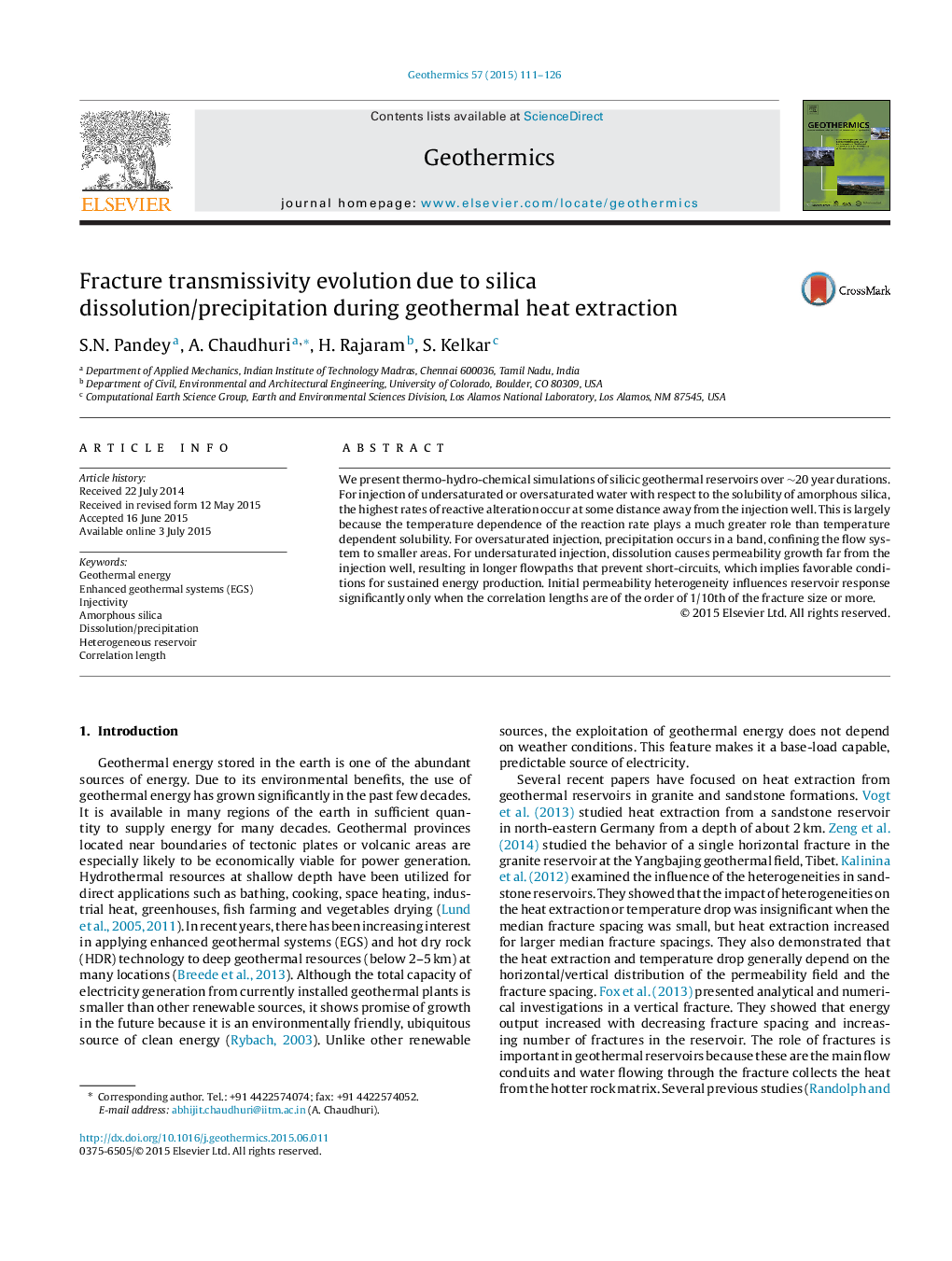| Article ID | Journal | Published Year | Pages | File Type |
|---|---|---|---|---|
| 1742230 | Geothermics | 2015 | 16 Pages |
•Coupled THC model of reactive alteration and permeability evolution in silicic reservoirs.•Temperature dependence of reaction kinetics more important than that of silica solubility.•For oversaturated injection, precipitation along a band confines the flow system.•Freshwater injection may be effective for geothermal reservoirs in silicic rocks.•Heterogeneity affects energy production when the correlation lengths are large.
We present thermo-hydro-chemical simulations of silicic geothermal reservoirs over ∼20 year durations. For injection of undersaturated or oversaturated water with respect to the solubility of amorphous silica, the highest rates of reactive alteration occur at some distance away from the injection well. This is largely because the temperature dependence of the reaction rate plays a much greater role than temperature dependent solubility. For oversaturated injection, precipitation occurs in a band, confining the flow system to smaller areas. For undersaturated injection, dissolution causes permeability growth far from the injection well, resulting in longer flowpaths that prevent short-circuits, which implies favorable conditions for sustained energy production. Initial permeability heterogeneity influences reservoir response significantly only when the correlation lengths are of the order of 1/10th of the fracture size or more.
